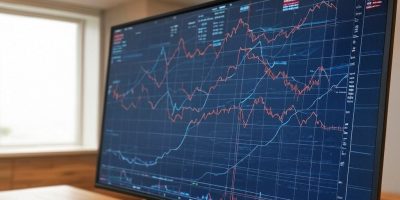Market statistics of all kinds captivate the financial social media and blogosphere, but one should carefully scrutinize claims. A better maxim is to believe only the statistics you can verify yourself, although this is not always possible.
In my 14 years of financial social media presence, I have seen many market statistics fail verification. Most market statistics are essentially generated by backtests, which make assumptions and are prone to errors. Small sample sizes also pose a problem, but this relies on the assumption of correct calculation of the statistics initially. In many cases, the calculations are wrong. The primary cause of these errors is the hasty calculation of statistics to bolster market theories and validate specific biases, whether bullish or bearish. It is frightening that most people take these statistics at face value, especially if the presentation is fancy and the person presenting them has a large following.
Usually, accounts with a large following provide statistics that demonstrate the market’s recovery after significant drops. However, given the market’s long-term upward bias, these statistics have little value, at least until this point. But I have never seen any statistics on how many investors hit the uncle point while the market was in a correction mode before recovering to new highs.
Every time I see an interesting statistic, I take the time to try to verify it. I have a large collection of scripts I have used to verify market statistics, and in many cases, the claims were wrong or partially true due to sampling error, selection bias, and other issues.
For example, someone claimed on X yesterday that if stocks recover to new all-time highs after a 5% or larger pullback within a short time, as it happened recently, then there are no cases of the market dropping 10% or more in the next three months, except in 2000. I found this claim interesting, so I programmed a script to verify it. I immediately found cases where the claim was not true.
On October 4, 2021, the S&P 500 index experienced a 5.2% decline from its historical highs, reached new highs on January 3, 2022, and then experienced a 20.8% decline by June 16, 2022.
The 1987 crash stands out as the most severe example. By May 20, 1987, the index had fallen 7.9%, reached new highs, and then crashed.
Be very careful of what you are taking for granted on financial social media. Those who post statistics may not have malicious intent, but their haste to validate their bias may lead to errors. Always verify!
Premium Content
By subscribing, you have immediate access to hundreds of articles. Premium Articles subscribers have immediate access to more than two hundred articles, and All in One subscribers have access to all premium articles, books, premium insights, and market signal content.
Specific disclaimer: This report includes charts that may reference price levels. If market conditions change the price levels or any analysis based on them, we may not update the charts. All charts in this report are for informational purposes only. See the disclaimer for more information.
Disclaimer: No part of the analysis in this blog constitutes a trade recommendation. The past performance of any trading system or methodology is not necessarily indicative of future results. Read the full disclaimer here.
Charting and backtesting program: Amibroker. Data provider: Norgate Data
If you found this article interesting, you may follow this blog via RSS, email, or Twitter.









